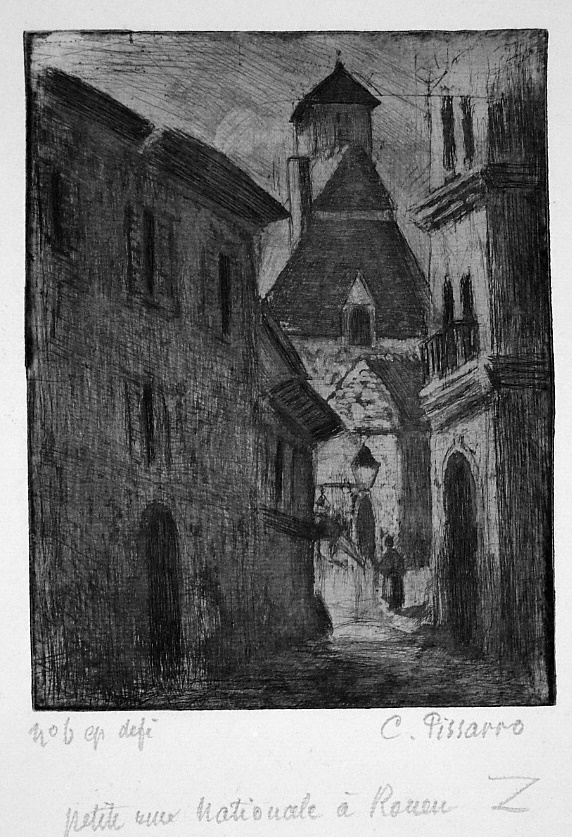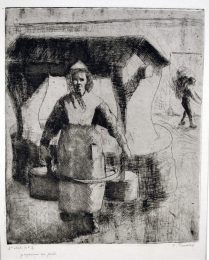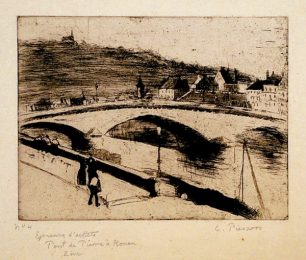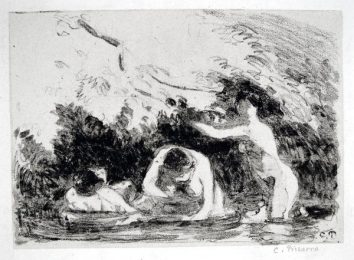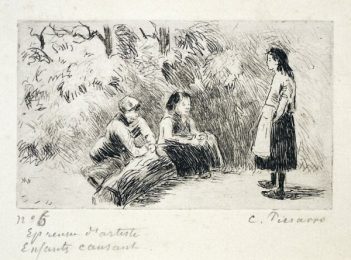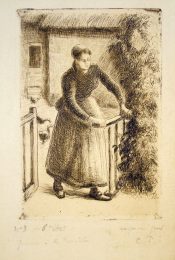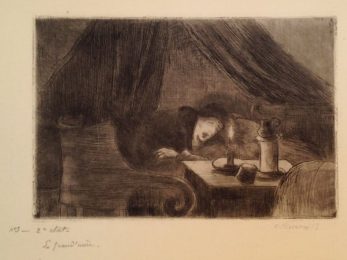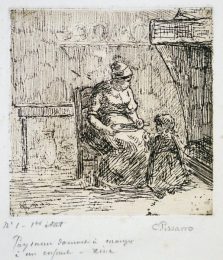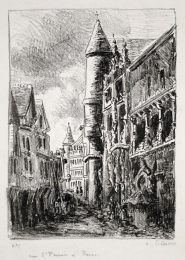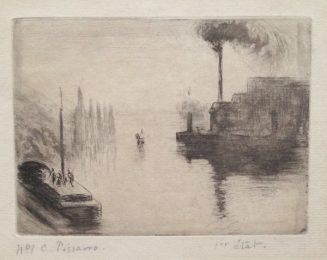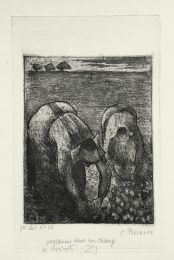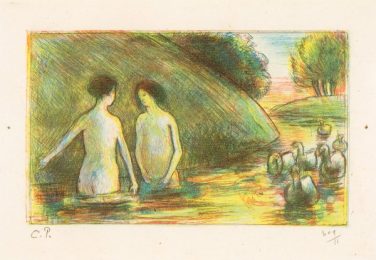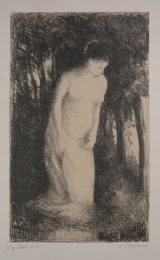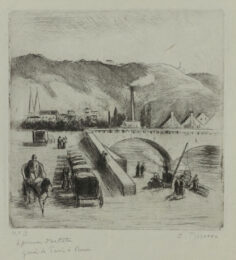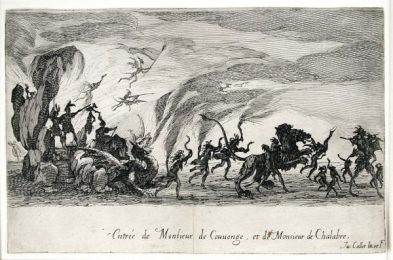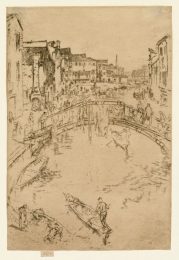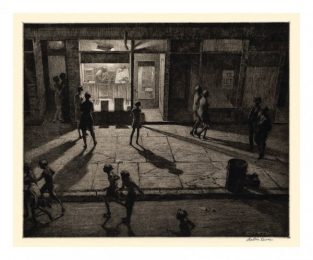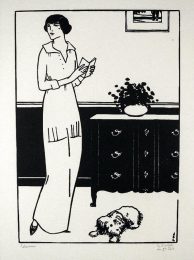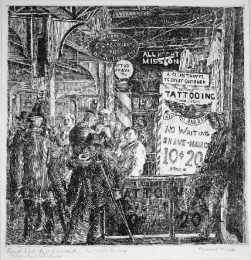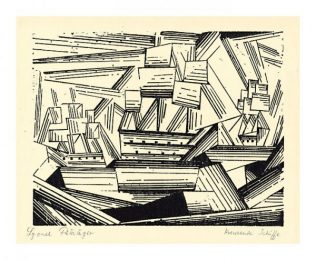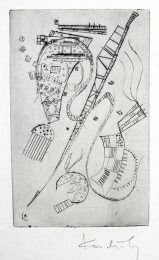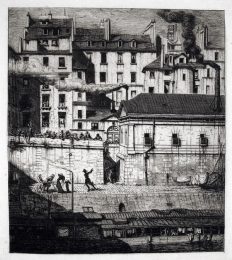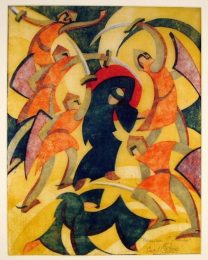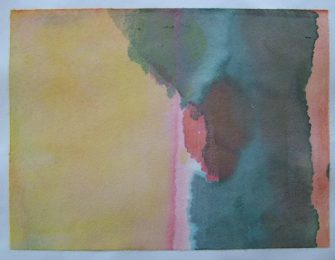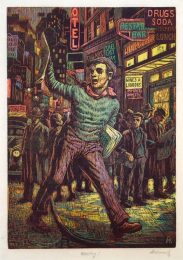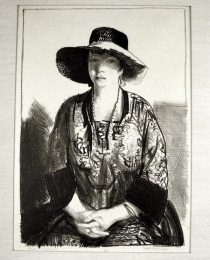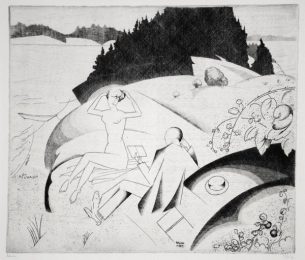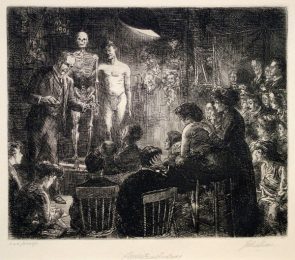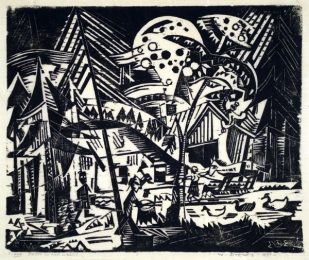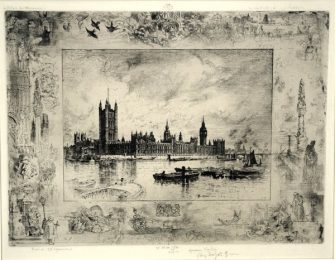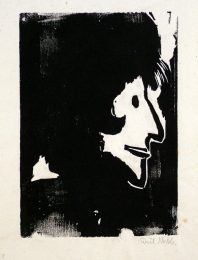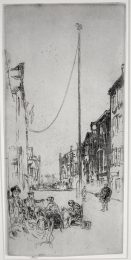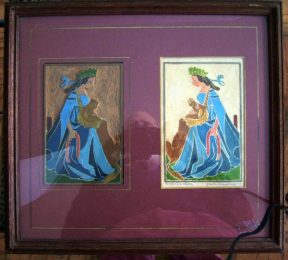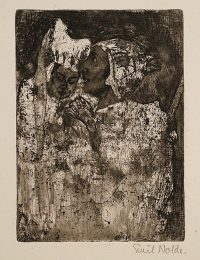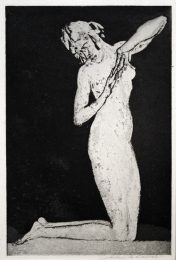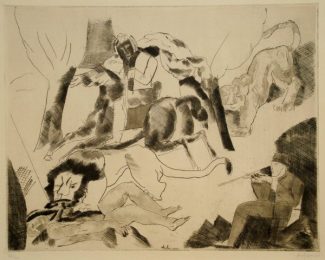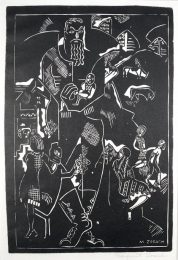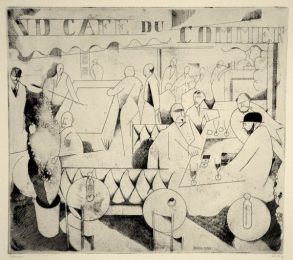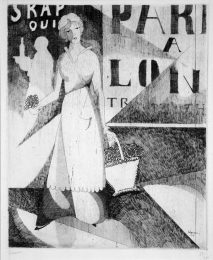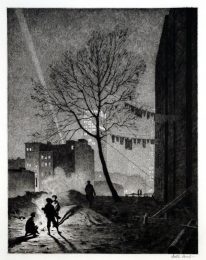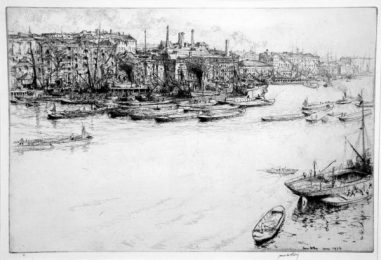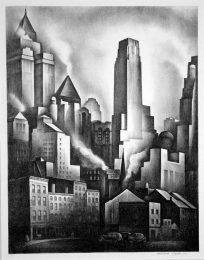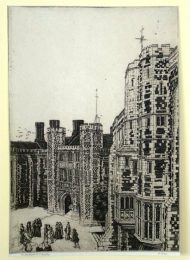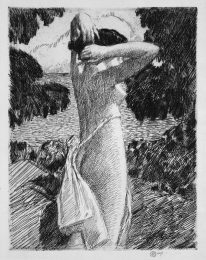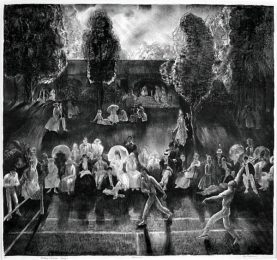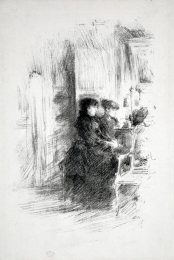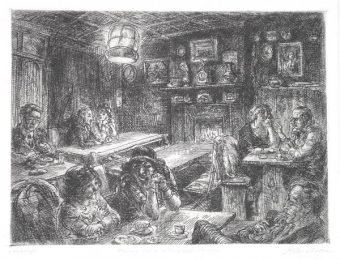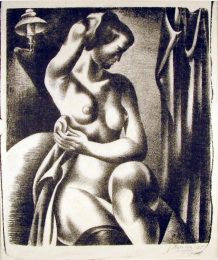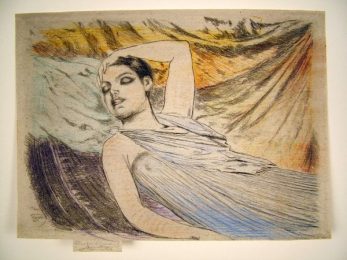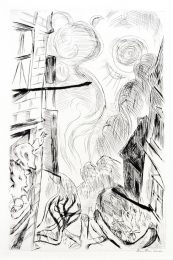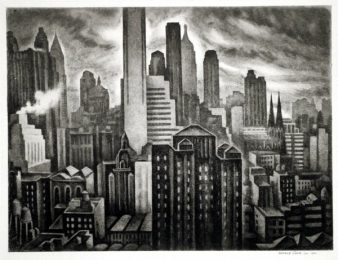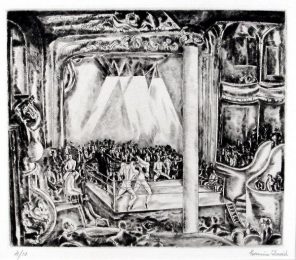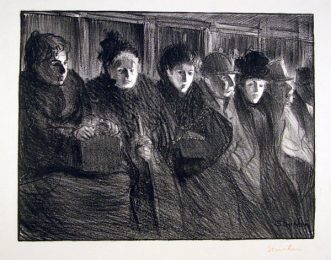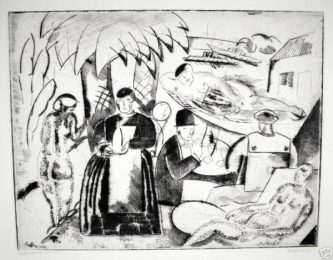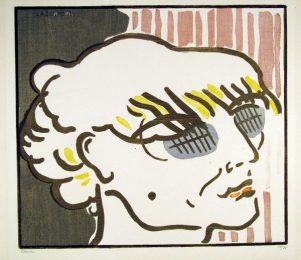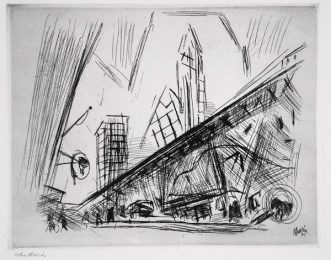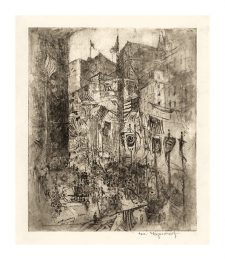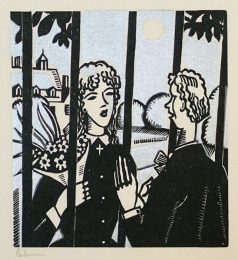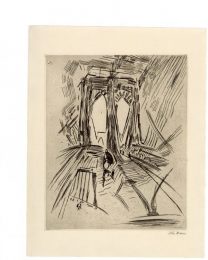Details — Click to read
Camille Pissarro (1830-1903), Narrow Street in Rouen (Petite Rue Nationale, a Rouen), etching, drypoint, maniere grise, aquatint, 1896, signed in pencil lower right, numbered (No 6) and annotated “ep defi” (definitive proof) lower left, titled below (and with the added annotation Z). Reference: Delteil 122, third state (of 3). In excellent condition, the full sheet with very wide margins (remains of prior hinging verso, mat staining in margins not affecting image), printed on an ivory laid paper, 6 1/2 x 5 1/8, the sheet 16 1/4 x 11 5/8 inches.
There was one impression of the first state, one of the second state, and 8 or 9 of the third state, according to Delteil. Each of the third state impressions is annotated “ed defi”, numbered and signed, as is this impression; this impression is also titled. In the second and third states Pissarro darkened the plate substantially (see notes below).
Provenance: Henri Petiet, with his blindstamp verso (Lugt Supplement 2021a)
A very fine impression of this great rarity, printed in a black/grey ink with substantial plate tone overall, wiped to convey a sense of light near the streetlight at the back of the street, in the sky, and in the face of the building to the right.
Several years before etching Petite Rue Nationale Pissarro and Degas had worked closely together, developing a variant of the aquatint technique called “maniere grise”, in which they scraped the plate with an emery point; that technique appears to have been used in this print. Both Pissarro and Degas loved to re-work their plates through a number of states, carefully giving the plates different shadings and nuances. Printing in this way is time consuming, and for the vast majority of prints Pissarro insisted on doing the printing himself. Although Petite Rue Nationale was created in only three states, and printed only about 10 or 11 impressions in all, the plate appears to have been worked over in astonishing detail, with a myriad of etching or drypoint lines as well as aquatint and maniere grise. Then the plate was wiped carefully after each printing. Of course all this meant that the plate could withstand only very limited printings (and no large edition was even contemplated). For all of these reasons, it is understandable that only a relatively few lifetime impressions of Petite Rue Nationale were ever made, and today lifetime impressions of Pissarro etchings such as this are rarely available.

